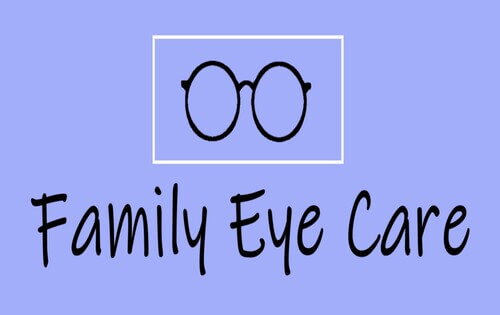Andalusia Eye Doctors: Expert Ophthalmologists in Your Area
Wiki Article
The Benefits And Drawbacks of Different Refractive Surgical Treatments for Enhanced Eyecare

LASIK Surgery
LASIK surgery is a frequently performed refractive procedure that intends to deal with vision issues such as astigmatism, farsightedness, and nearsightedness. During the treatment, a thin flap is developed on the cornea, and a laser is made use of to improve the underlying cells, fixing the refractive error.One of the main advantages of LASIK surgical treatment is the quick improvement in vision experienced by several individuals. Most individuals see a significant improvement in their eyesight shortly after the procedure, with marginal downtime needed for recuperation. Furthermore, LASIK is known for its high success price and low incidence of problems when executed by knowledgeable surgeons. Like any surgical treatment, LASIK likewise lugs some threats, including completely dry eyes, glare, halos, and under or overcorrection of vision. It is crucial for individuals thinking about LASIK surgery to undergo an extensive analysis by an eye treatment specialist to determine if they are appropriate candidates for the procedure.
PRK Procedure
The PRK procedure, likewise recognized as Photorefractive Keratectomy, is a kind of refractive surgery that aims to fix vision problems similar to LASIK surgical treatment. Unlike LASIK, which entails developing a flap in the cornea, PRK functions on the surface area layer of the cornea.One of the benefits of PRK over LASIK is that it eliminates the danger of flap-related difficulties given that no flap is developed during the surgery. Despite the longer recuperation period, PRK can be a suitable alternative for people looking for vision improvement surgery.
SMILE Surgical Procedure
An advanced refractive surgical procedure technique gaining appeal in the area of ophthalmology is SMILE Surgical treatment. Tiny Incision Lenticule Removal (SMILE) is a minimally intrusive treatment that remedies vision by reshaping the cornea utilizing a femtosecond laser. Unlike typical LASIK surgical procedure, SMILE Surgery involves creating a small incision in the cornea to extract a lenticule, which causes much less disruption to the corneal framework and potentially quicker healing times.One of the main benefits of SMILE Surgical treatment is its capability to treat nearsightedness (nearsightedness) and astigmatism with high precision, bring about excellent aesthetic end results for individuals. The minimally intrusive nature of the treatment additionally lowers the danger of problems such as completely dry eye syndrome, making it a favorable choice for individuals looking for refractive surgery.

LASEK Method
Having explored the benefits and considerations of SMILE Surgery, an additional notable refractive surgery technique worth taking a look at is the LASEK Method. LASEK, which means Laser-Assisted Subepithelial Keratectomy, is a form of laser eye surgical treatment that intends to deal with refractive mistakes such as nearsightedness (nearsightedness), hyperopia (farsightedness), and astigmatism.Unlike LASIK, LASEK does not involve producing a corneal flap. Rather, during a LASEK treatment, the surgeon uses a watered down alcohol option to loosen the thin external layer of the cornea, called the epithelium. This layer is then carefully relocated aside to enable the laser to reshape the underlying corneal tissue. When the cornea has been improved to the preferred degree, the epithelial layer is rearranged.
Among the key advantages of LASEK is that it can be suitable for people with slim corneas that may not be great candidates for LASIK. Furthermore, LASEK typically leads to very little post-operative pain and a quicker healing time compared to PRK. The visual recuperation procedure with LASEK may be a little longer than with LASIK.
Implantable Get In Touch With Lenses
Implantable Get in touch with Lenses offer a long-term vision correction service for individuals seeking a choice to traditional call lenses or glasses. These lenses, additionally known as phakic intraocular lenses, are operatively sites inserted into the eye to deal with refractive mistakes such as myopia (nearsightedness), hyperopia (farsightedness), and astigmatism. andalusia pediatrics. Unlike standard call lenses that rest on the surface of the eye, implantable contact lenses work within the eye itself, giving clear vision without the requirement for everyday maintenance or removal
Among the crucial advantages of implantable contact lenses is their permanence. When put, they can continue to be in the eye indefinitely, offering stable and consistent vision correction. In addition, these lenses can be an excellent alternative for people who are not great candidates for laser eye surgical treatment or that prefer a relatively easy to fix vision adjustment procedure.
Nonetheless, implantable call lenses do lug some threats, including the potential for cataracts or boosted eye pressure. It is check critical for people considering this choice to talk to an eye care professional to identify if implantable get in touch with lenses are the right option for their particular demands and eye health.
Conclusion
Finally, each type of refractive surgical treatment has its very own benefits and disadvantages. LASIK surgical treatment is preferred for its quick recovery time, while PRK treatment might appropriate for clients with slim corneas. SMILE surgical treatment uses minimal discomfort during the procedure, yet LASEK technique may have a longer healing procedure. Implantable contact lenses supply an option for those who are not suitable candidates for traditional surgeries. People ought to speak with their eye care company to identify the most effective choice for their individual requirements.
On The Whole, SMILE Surgical procedure offers an appealing alternative for individuals looking to enhance their vision via refractive surgical treatment.
Report this wiki page